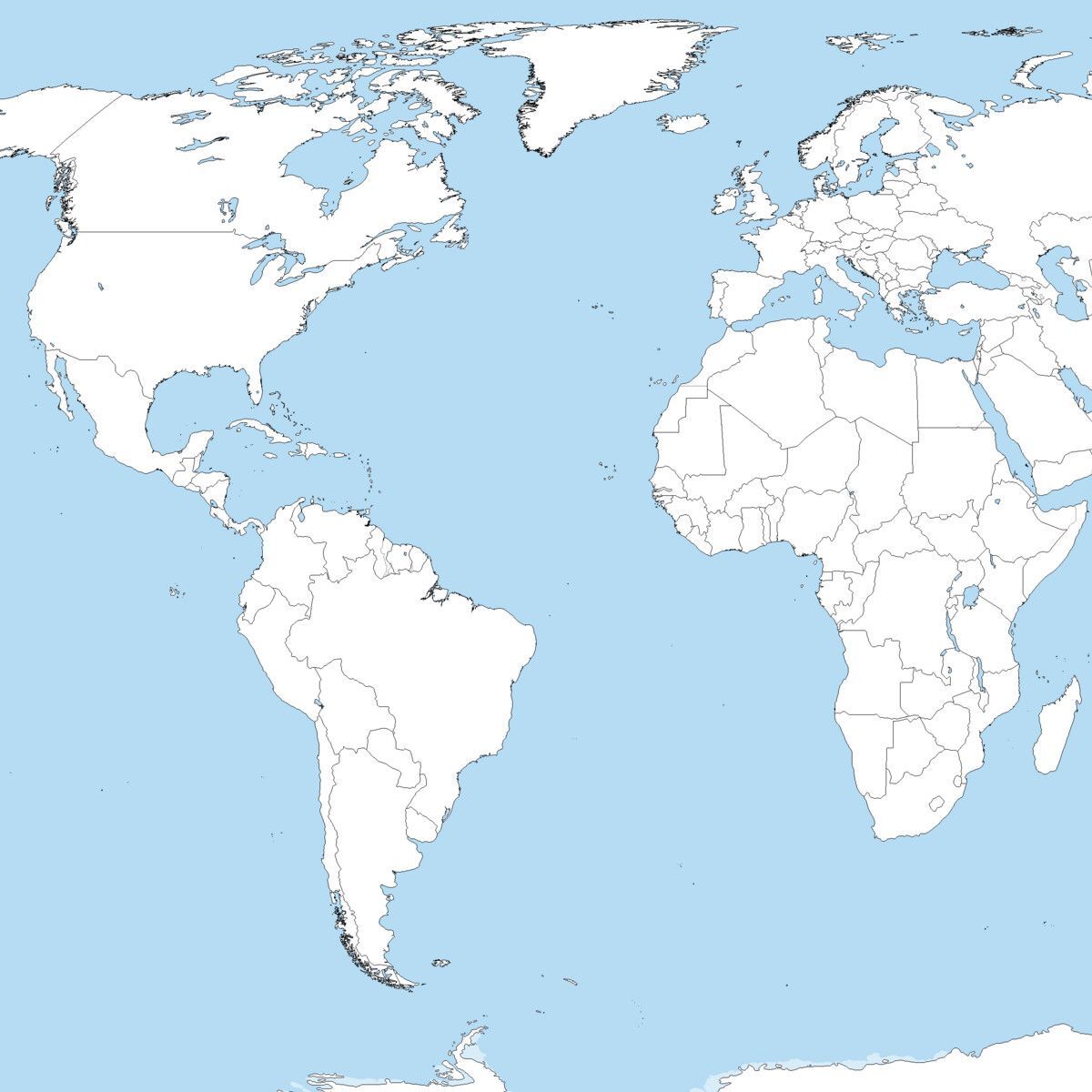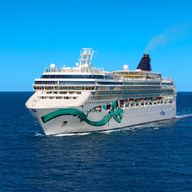

Norwegian Jade - 10/18/2026
The October 18, 2026 cruise on the Norwegian Jade departs from Incheon (seoul). South Korea. On this 11 Night Asia: Osaka Nagoya Sakaiminato & Hakodate (Seoul To Tokyo) sailing, the ship will visit a total of 10 cruise port destinations, including its departure port. The Norwegian Jade sets sail on Sunday, Oct 18th and returns on Thursday, Oct 29th.
Cruise Pricing
The graph below tracks historic price of the Norwegian Jade cruise ship departing October 18, 2026. The most recent price for this sailing starts at $2,119 ($193 per night) for an Inside Cabin. Compared to the average price of $2,275 ($207 per night), this represents a recent decrease of 7%.
Use the buttons below to toggle between cabin types.
Cruise Itinerary
Itinerary
Norwegian Jade - October 18, 2026 - 11 Nights
| Day | Date | Port |
|---|---|---|
| 1 | Oct 18th | Incheon (seoul). South Korea |
| 2 | Oct 19th | At Sea |
| 3 | Oct 20th | Sakaiminato, Japan |
| 4 | Oct 21st | Kanazawa, Japan |
| 5 | Oct 22nd | Akita, Japan |
| 6 | Oct 23rd | Aomori, Japan |
| 7 | Oct 24th | Hakodate, Japan |
| 8 | Oct 25th | At Sea |
| 9 | Oct 26th | Shimizu, Japan |
| 10 | Oct 27th | Osaka, Japan |
| 11 | Oct 28th | Nagoya, Japan |
| 12 | Oct 29th | Tokyo, Japan |
The Norwegian Jade sails on October 18, 2026 for a 11 Night Asia: Osaka Nagoya Sakaiminato & Hakodate (Seoul To Tokyo). The ship will depart the port of Incheon (seoul). South Korea at 4:00 PM and will return to the port of Tokyo, Japan on Oct 29th at 7:00 AM. During the 12-day journey, the Norwegian Jade will visit 9 additional ports and will spend 2 days at sea.
Cruise Ship

Norwegian Jade
NORWEGIAN JADE SIZE
The Jade has a construction date of 2006 and a total size of 93,558 gross tons. The ship measures 965 feet (294 meters) in length. Norwegian Jade is included in Norwegian’s Jewel Class. At full capacity, the Norwegian Jade holds 3,439 passengers. That includes 2,402 cruise vacationers and 1,037 staff members. The Jade total number of staterooms is 1,201.
Norwegian Jade Size & Stats
- Gross Tonnage:93,558 GT
- Length:965 ft (294 m)
- Beam:125 ft (38 m)
- Draft:27 ft (8 m)
- Max Speed:29 mph (25 kn)
- Year Built:2006
- Years Served:2006 - Present
- Capacity:2,402
- Crew Members:1,037
- Total on Board:3,439
- Total Staterooms:1,201
- Flagged Country:Bahamas
- Ship Cost:390 Million
- Status:active
To see how this compares, click through to see Norwegian Jade age and stats vs all Norwegian ships. There you’ll find graphs showing length, capacity, tonnage and more for this ship vs all in the fleet.
To check out the ship from top to bottom, click here for Norwegian Jade Deck Plans.
Cruise Ports
Incheon, South Korea, has docking at Incheon Port with excursions to Seoul. Travelers explore Gyeongbokgung Palace and Myeongdong markets. Excursions visit DMZ’s historic sites. Local markets sell kimchi. The peak season, April to June, brings mild weather. Photography captures palaces and urban skylines. Dining onboard includes bulgogi, a Korean favorite. Souvenirs, like hanbok dolls, are sold in ship shops. Briefings cover Korean history. Light layers suit the temperate climate. Comfortable shoes enhance city tours. Incheon’s access to Seoul offers a vibrant South Korean stop, blending culture with modern energy.
Take advantage of the many on board activites during your day at sea. You'll have more than enough to fill your day!
Sakaiminato, Japan, offers docking at Sakaiminato Port. Travelers explore Mizuki Shigeru’s yokai museum and Tottori Sand Dunes. Excursions visit Matsue Castle. Local markets sell kani sushi. The peak season, April to October, brings mild weather for coastal tours. Photography captures manga art and Sea of Japan vistas. Dining onboard includes dashi broth, a Japanese favorite. Souvenirs, like yokai crafts, are sold in ship shops. Briefings cover Tottori history. Light layers suit the temperate climate, while comfortable shoes enhance dune walks. Sakaiminato’s quirky charm offers a vibrant Japanese stop. Cruise travelers enjoy a mix of cultural museums, scenic dunes, and coastal heritage, making Sakaiminato an engaging destination for exploration.
Kanazawa, Japan, has docking at Kanazawa Port. Travelers explore Kenrokuen Garden’s serene landscapes. Excursions visit Higashi Chaya’s geisha district. Local markets sell kaga yuzen silk. The peak season, March to May, brings cherry blossoms. Photography captures gardens and traditional teahouses. Dining onboard includes kaga ryori, a local cuisine. Souvenirs, like gold leaf crafts, are sold in ship shops. Briefings cover samurai history. Light layers suit the temperate climate. Comfortable shoes enhance garden walks. Kanazawa’s cultural elegance offers a refined Japanese stop, blending heritage with scenic beauty.
Akita, Japan, accommodates cruise ships at its Northern Port terminal, 5 kilometers from downtown, with shuttles or taxis providing 15-minute transfers. The facility includes restrooms, a cafe, and tourist information. Travelers access the Akita City Museum of Art, showcasing Tadao Ando's architecture with a reflecting pool and works by Tsuguharu Foujita. Senshu Park, adjacent to the station, features the Akita Hachiman Shrine from 1694 and cherry blossoms in April. Kakunodate, 1 hour by train, explores preserved samurai residences with black lacquer walls and gardens. Lake Tazawa, 45 minutes west, offers boat rides on Japan's deepest crater lake, surrounded by beech forests. Local markets sell kiritanpo (rice sticks) and sake tastings. Peak visits October to April; trains cost 500-1000 yen. Dining includes inaniwa udon noodles at harbor eateries. Souvenirs feature Akita dog figurines.
Aomori, Japan, docks at Aomori Port, 2 kilometers from downtown, with shuttles or taxis for 10-minute transfers. The city, population 280,000, features the Nebuta Museum, showcasing colorful floats from the August Nebuta Festival. Travelers visit Sannai-Maruyama, a 5-minute drive, for Jomon-era village reconstructions from 3900 BC. Hirosaki Castle, 45 minutes by train, offers cherry blossoms in April. Local markets sell apples and sake. Excursions to Lake Towada, 90 minutes south, include boat rides through volcanic scenery. Peak season April to October; taxis 800-1200 JPY. Dining features scallop miso soup at harbor cafes. Souvenirs include kokeshi dolls.
Hakodate, Japan, has docking at Hakodate Port. Travelers explore Goryokaku Fortress’ star-shaped design. Excursions visit Onuma Park’s scenic lakes. Local markets sell fresh squid. The peak season, April to June, brings mild weather. Photography captures night views from Mount Hakodate. Dining onboard includes kaisen don, a seafood bowl. Souvenirs, like glass crafts, are sold in ship shops. Briefings cover Hokkaido’s history. Light layers suit the temperate climate. Comfortable shoes enhance fortress tours. Hakodate’s historic charm and scenic beauty offer a serene Japanese stop, blending culture with natural splendor.
Take advantage of the many on board activites during your day at sea. You'll have more than enough to fill your day!
Shimizu, Japan, offers docking at Shimizu Port. Travelers explore Mount Fuji viewpoints and Nihondaira’s tea gardens. Excursions visit Shizuoka’s Toro Ruins. Local markets sell wasabi. The peak season, April to October, brings mild weather for coastal tours. Photography captures Fuji’s slopes and Suruga Bay vistas. Dining onboard includes unagi, a Japanese favorite. Souvenirs, like tea crafts, are sold in ship shops. Briefings cover Shizuoka history. Light clothing and sun protection suit the temperate climate, while comfortable shoes enhance garden walks. Shimizu’s scenic charm offers a vibrant Japanese stop. Cruise travelers enjoy a mix of natural beauty and cultural heritage, making Shimizu an engaging destination for exploring Japan’s Fuji region.
Osaka, Japan, provides docking at Osaka Port. Travelers explore Osaka Castle and Dotonbori’s vibrant food scene. Excursions visit Kyoto’s Kinkaku-ji Temple. Local markets sell takoyaki. The peak season, March to May, brings cherry blossoms and mild weather. Photography captures samurai castles and neon-lit canals. Dining onboard includes okonomiyaki, an Osaka favorite. Souvenirs, like tenugui cloths, are sold in ship shops. Briefings cover Kansai history. Light layers suit the temperate climate, while comfortable shoes enhance city walks. Osaka’s dynamic urban culture offers a vibrant Japanese stop. Cruise travelers enjoy a mix of historic landmarks, culinary delights, and modern energy, making Osaka an engaging destination for exploring Japan’s Kansai region and cultural heritage.
Nagoya, Japan, provides docking at Nagoya Port. Travelers explore Nagoya Castle and Atsuta Shrine. Excursions visit Toyota’s factory museum for automotive history. Local markets sell kishimen noodles. The peak season, March to May, brings cherry blossoms and mild weather. Photography captures samurai castles and urban skylines. Dining onboard includes hitsumabushi, a Nagoya eel dish. Souvenirs, like noren curtains, are sold in ship shops. Briefings cover Aichi’s industrial history. Light layers suit the temperate climate, while comfortable shoes enhance castle walks. Nagoya’s blend of history and modernity offers a vibrant Japanese stop. Cruise travelers enjoy a mix of samurai heritage, spiritual sites, and industrial innovation, making Nagoya an engaging destination for exploring Japan’s cultural and technological richness in the Chubu region.
Tolanaro (Fort Dauphin), Madagascar, offers docking at Tolanaro Port. Travelers explore Nahampoana Reserve and Libanona Beach. Excursions include lemur-watching at Berenty Reserve. Local markets sell zebu curry. The peak season, May to October, brings dry weather for coastal tours. Photography captures rainforests and Indian Ocean vistas. Dining onboard includes romazava, a Malagasy favorite. Souvenirs, like raffia crafts, are sold in ship shops. Briefings cover Tsitongambarika history. Light clothing and sun protection suit the tropical climate, while sturdy shoes enhance reserve walks. Tolanaro’s natural allure offers a vibrant Malagasy stop. Cruise travelers enjoy a mix of unique wildlife and scenic beaches, making Tolanaro an engaging destination for exploration.